By using eddy current testing (ECT) the structural soundness of steam generator (SG) tubes in Fast Breeder Reactors (FBR) can be checked fast and reliable. For the In-service inspection (ISI) of ferromagnetic tubes of FBR, made of Cr-Mo alloy, the remote field ECT (RF-ECT) is equally sensitive to the both inner and outer tube defects. When RF-ECT probe moves inside steam generator tubes the signal is able to indicate the presence/absence of defects. In FBR SG tubes sodium layers or sodium drops adheres to the external surface of tubes, and correspondingly influence the sensitivity of the ECT sensors due to its high electrical conductivity. Because the distribution of these sodium layers or drops is unknown, reliable multifrequency ECT techniques has to be validated in order to suppress the noise caused by the sodium. A new technique, defined as a window-multifrequency (WMF) was established and its validity and performance is evaluated against conventional multifrequency (MF) method using both simulations based on Finite Element Method (FEM) and experimental measurements. Computed signal from large support plate (SP) structures of SG tubes is used to find the optimum parameters of MF or WMF techniques. The main advantage (using numerical simulations and laboratory measurements) of WMF compared with MF is that is able to remove better the electromagnetic noise and enhance the Signal/Noise ratio resulting from sodium structures, when applied to ECT signals.
Phase 1 : Research and Development
- (1)Components:
Steam Generators of FBR or Light-water nuclear reactors (LWR), Support plates of SG tubes, Ferrite deposits in LWR, and tubes of other heat exchangers
- (2) Material:
Ferromagnetic material (for example: Cr-Mo alloy)
- (3)Condition:
Air, room temperature
- (4)Others:
Sodium layers and drops are present on the SG tube surface
- - Applicable to magnetic steam generator tubes of FBR or LWR with thick walls up to 4 mm
- - Applicable to noisy ECT signals from unknown distribution of sodium layers/drops on the external SG tube surface and large tube SP with many tubes.
- -Performance can be validated directly with test experimental data from SG tubes soaked in sodium.
- - The “worst case scenario” performance can be validated through FEM simulations which builds the noise from various sodium distributions.
- - Compared with the conventional MF, the new algorithm in WMF can generate a higher signal/noise ratio for defects near SP when applied to polluted ECT signals by sodium noise or variations in the SP signal.
In the multifrequency (MF) technique the ECT signal from several frequencies are combined in order to reduce the noise and amplify the signal. While both linear or non-linear combinations can be employed using simulations data, when using experimental data the noise in the signal can be excessively amplified by the non-linear algorithm. In order to apply the algorithm to experimental measurements, only linear MF algorithms were considered and employed.
The application of multifrequency ECT algorithms has to take into consideration also the signal of tube support plate (SP) and its variation due to various effects. Effects of large or small SP with single or multiple SG tubes (see Figure 1) are analyzed in these techniques by using FEM.

Fig.1 FEM models of large or small SP with single or multiple SG tubes
The optimal parameters of algorithms are determined from calibration of experimental measurements in test conditions with numerical simulations.
The window-multifrequency (WMF) was first introduced by the authors and its basic approach, when applied to defects in various positions (Figure 2a), is briefly explained in Figure 2b. A window with a fixed band is moving across the signal continuously. At each step of the movement a regular multifrequency algorithm is employed only for the subset of data inside of the window. The parameters of the algorithm do not change with the movement of window and they are determined and optimized through numerical FEM simulation in order to maximize the signal. In the dynamic version of WMF the parameters change dynamically to maximize S/N ratio. In our specific case the signal is considered to be the defect signal near SP and the noise is represented by the SP signal. A defect location is indicated in the algorithm representation when the signal to noise ratio (S/N) is larger than two.
While MF result is represented in a Lissajous diagram (Figure 2c-upper pictures), the WMF analysis result is displayed along signal time variation (Figure 2c –lower pictures) and usually provide a larger S/N ratio than MF. The optimum band width of the window is chosen properly after investigation using numerical FEM simulations for the ECT sensor system.
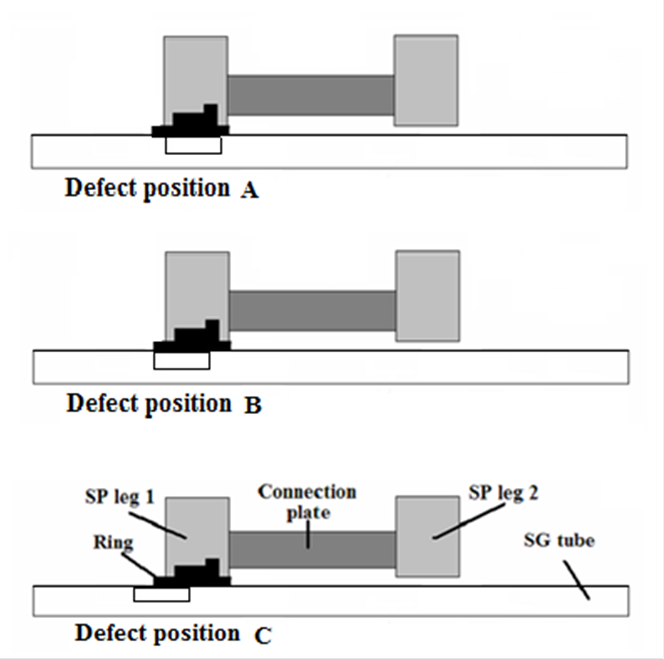
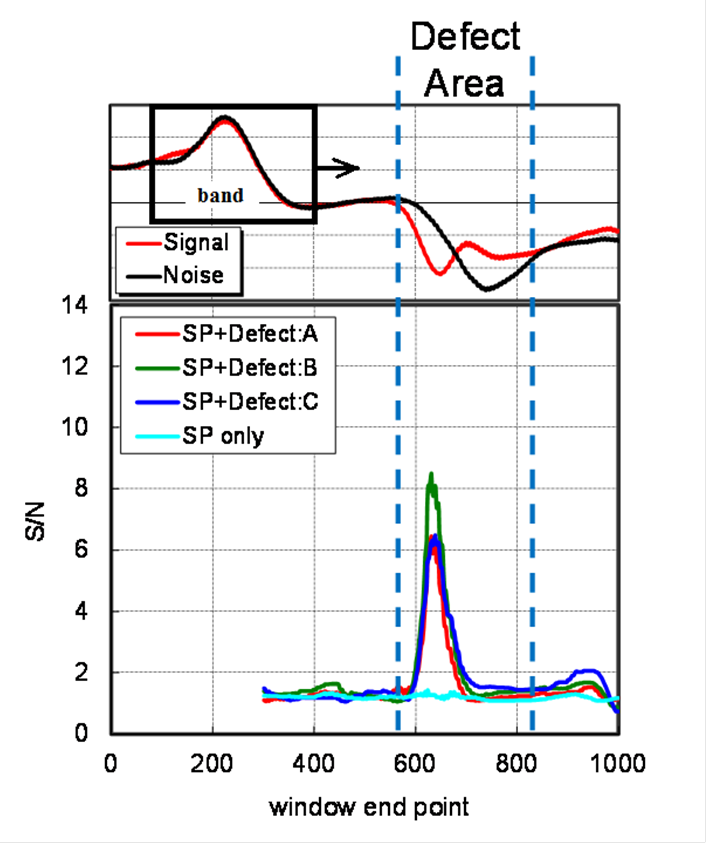
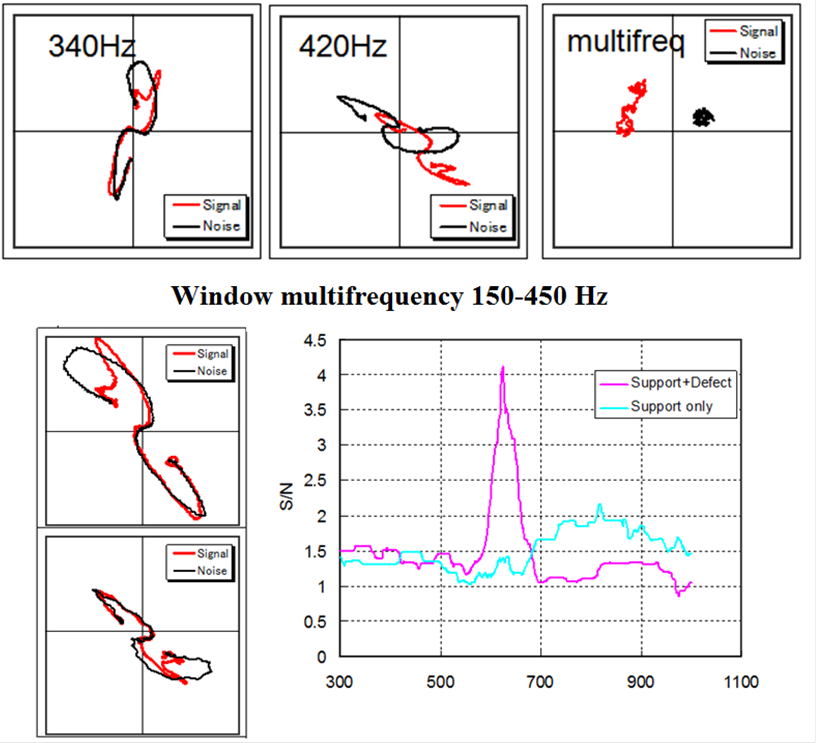
| Fig.2Multifrequency (MF) and window-multifrequency (WMF) for straight SG tubes: a) relative positions of defects to SP; b) principle of window multi-frequency; c) Results of application of MF (upper pictures) and WMF (lower pictures) to experimental data at two frequencies |
|---|
6.1 Validation with FEM simulations and measurements without sodium
The validations of MF and WMF for helical SG tube were conducted using a mockup, composed of a sodium tank and several helical SG tubes and a larger SP model (Fig. 3). The 3D FEM simulations were conducted for assessment of SP signal variation when various defects are presented under SP between SP and tube. SP signal varies (calculated using FEM) if there is a model with one or three SG tubes. Figure 4 shows the variation in SP signal at 150Hz when there is an outer groove full circumferential OD20%tw, 10 mm wide or an outer partial defect OD30%tw 10 mm wide and 90 degrees in circumferential direction.
Application of WMF to the numerical simulated data using the 3D FEM code, as is shown in Figure 5, confirmed large S/N ratio (>2.5) even for partial OD30%tw.
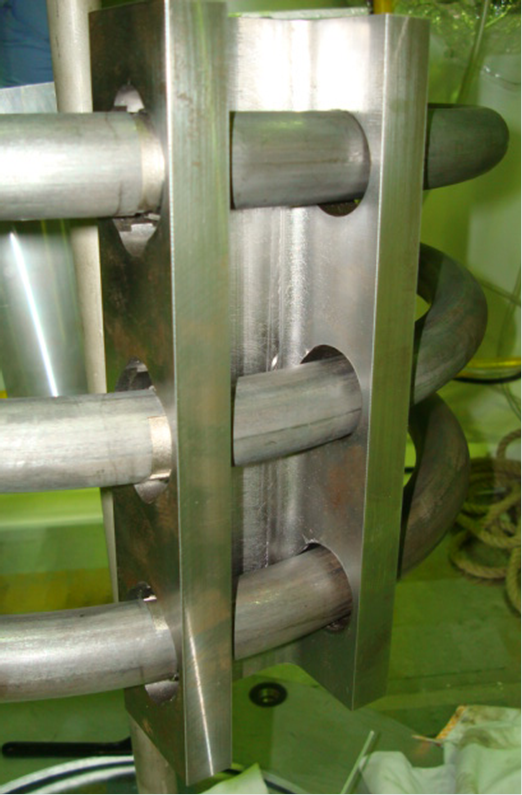
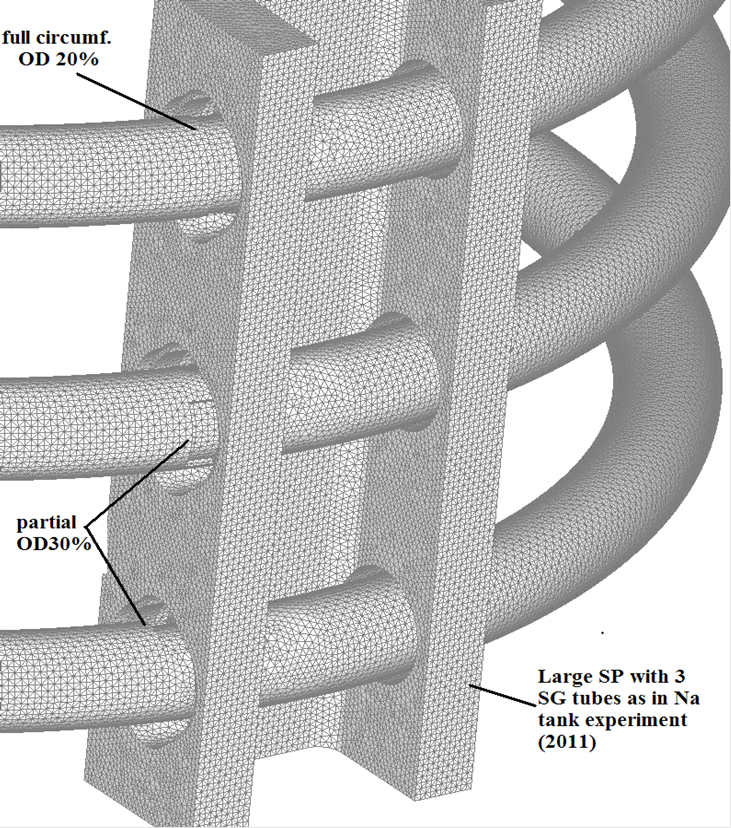

| Fig.3 a) View of the large SP model with 3 SG helical tubes; b) 3D FEM mesh model; c) ECT data |
|---|

Fig.4 Comparison between experimental data and FEM simulations, without sodium

Fig.5 Window-multifrequency using 3D FEM numerical simulations of helical SG tubes.
WMF was also validated directed with experimental measurements from the sodium test tank experiment and helical SG tubes with large SP model (Fig. 6).
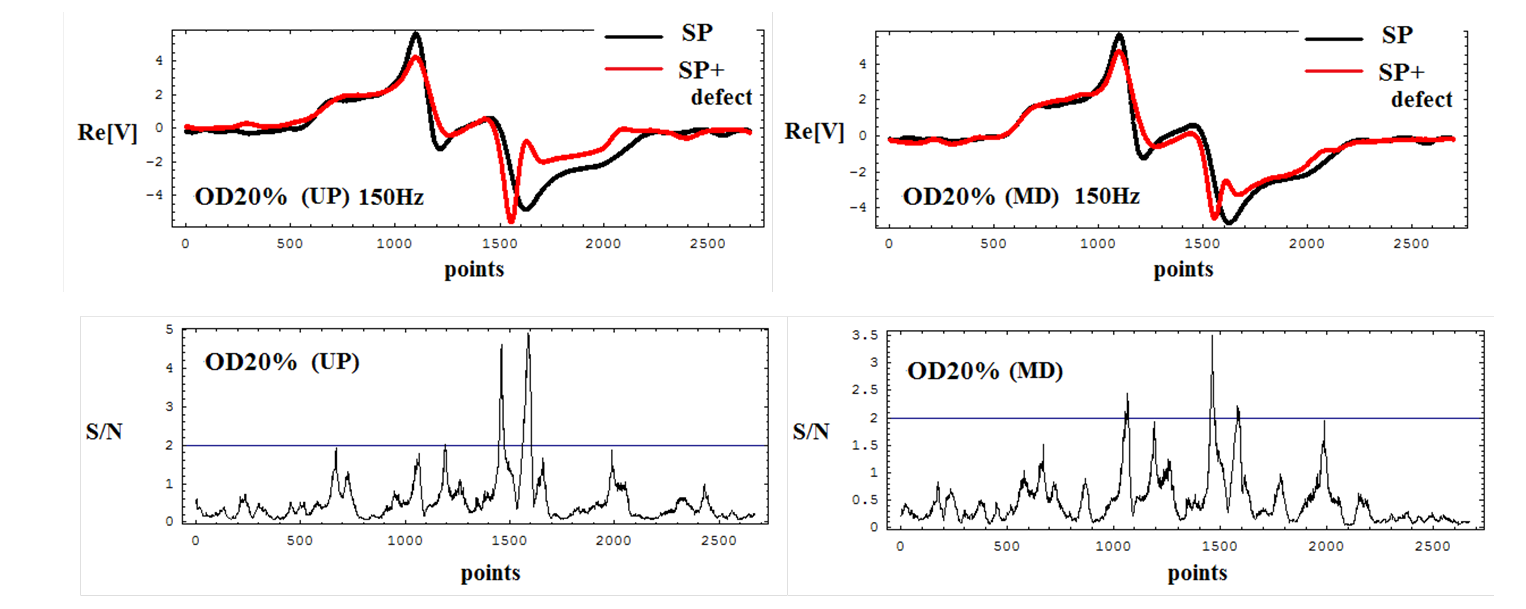
Fig.6 Window-multifrequency for full circumferential groove OD20%tw under SP using measurements of helical SG tubes, without sodium
Applications of multifrequency and window-multifrequency ECT algorithms were validated for helical SG tubes of FBR in order to suppress the noise caused by the large support plate and reveal hidden defects under support plate. The validations were first demonstrated using 3D FEM simulations and then experimental measurements from a sodium mockup test tank. Detection of the full circumferential OD20%tw with S/N larger than 6 and of the partial OD30%tw with S/N larger than 4 is feasible when using a dynamic version of the window-multifrequency. In the dynamic version, the WMF parameter set is not fixed anymore and change dynamically at every point in order to maximize the S/N ratio for each window set of data.
6.2 Validation with simulations with sodium and large SP models
Multifrequency and window multi-frequency algorithm were applied to FEM models of small SP with one SG tube or large SP with nine SG tubes and with sodium. Window multi-frequency algorithm provide larger signal/noise ratio of defect detection under SP and in presence of sodium than conventional multi-frequency algorithm. The algorithm feasibility was demonstrated using 3D numerical simulations using based on FEM, even when the algorithm parameters were determined from a small SP model and then applied to the large SP model.
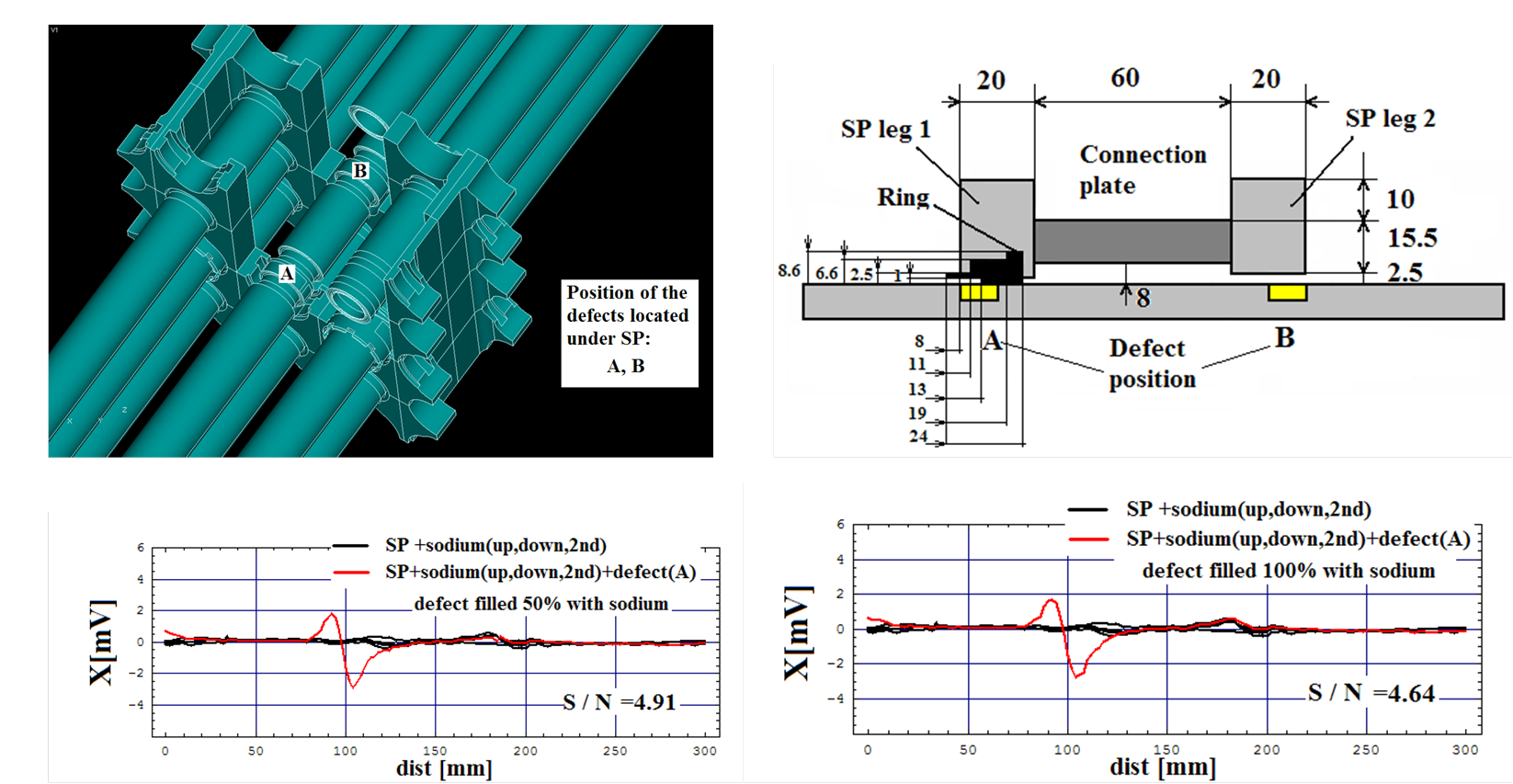
Fig.7 Multifrequency ECT for FEM simulations of SG tubes with sodium
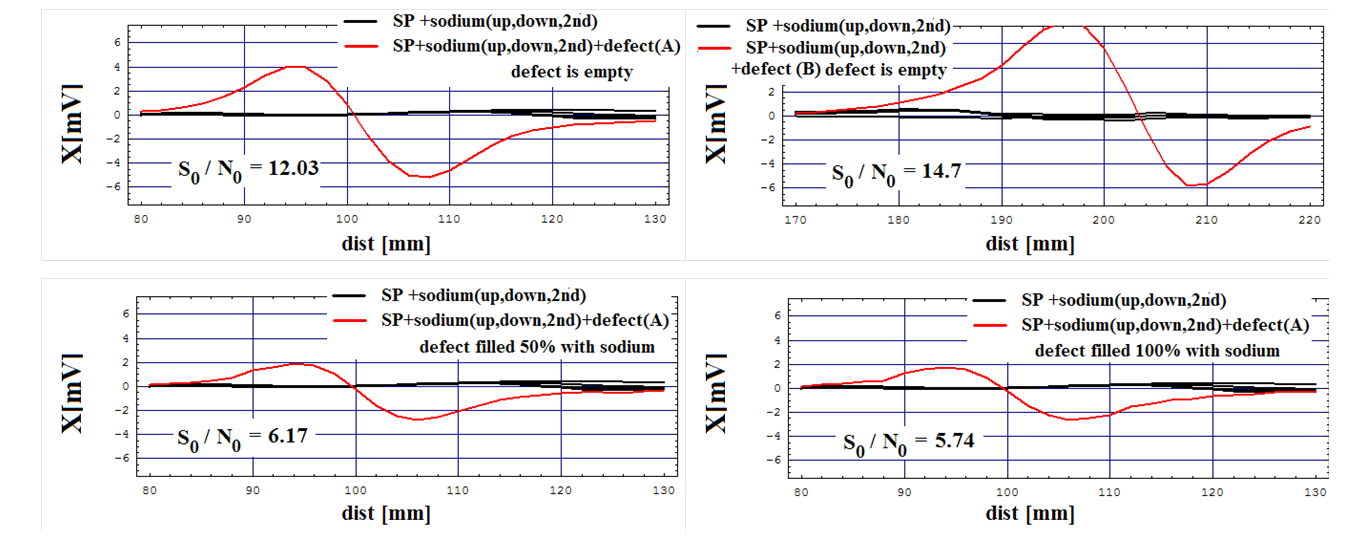
Fig.8 Multifrequency ECT for FEM simulations of SG tubes with sodium
Further validations of MF and WMF with experimental measurements in laboratory and SG mock-up when there is sodium on tube surface will be addressed in the next development phase. The algorithms of MF and WMF will be validated in next phase for SG tubes of Monju FBR.
- [1] O. Mihalache, T. Yamaguchi, M. Ueda, "Large Scale 3D FEM Electromagnetic Simulations and Validations for Steam Generator Tubes", ENDE 2012, Rio de Janeiro, Brazil, (2012).
- [2] T. Yamaguchi, O. Mihalache, M. Ueda, " Experimental Measurements and Simulations of ECT Signal for Ferromagnetic SG Tubes Covered by a Sodium Layer", ENDE 2013, Bratislava, Slovak Republic, (2013).
- [3] O. Mihalache, T. Yamaguchi, M. Ueda, Computational Challenges in Numerical Simulations of ISI of Ferritic Steam Generator Tubes in Fast Breeder Reactors using Eddy Currents and Multi-frequency Algorithms, E-Journal of Advanced Maintenance, Vol. 3, No. 2, August, (2011), pp. 54-77.
- [4] O. Mihalache, T. Yamaguchi, M. Ueda, Validations of Multifrequency ECT Algorithms for Helical SG Tubes of FBR, ENDE 2013, Bratislava, Slovak June, (2013).





